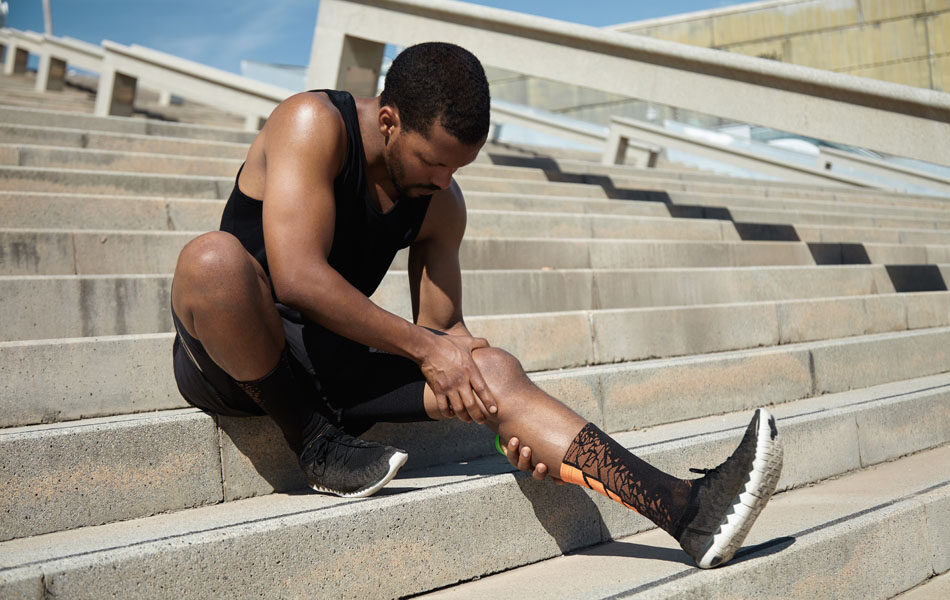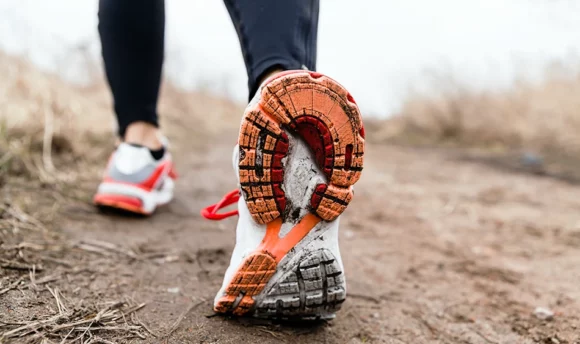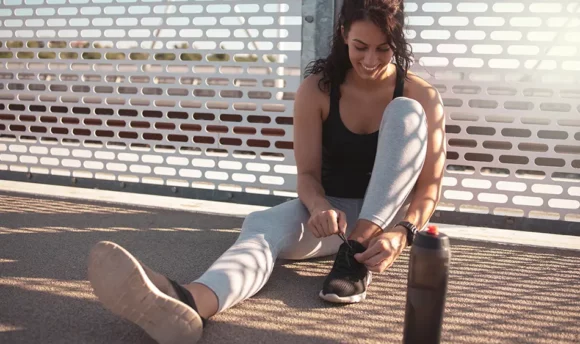Running With Sore Legs? 8 Tips to Relieve Soreness
Today’s article is centered on running and muscle soreness. We look at why it happens and the steps to avert it. Stay tuned.

It is always a hassle trying to work out when you feel sore all over. Most people’s opinions center on averting any form of physical activity for as long as they feel sore.
However, it is safe to say that muscle soreness is a recurring issue for many people. With that in mind, the question becomes whether running with a bit of muscle soreness is okay or not.
In today’s article, we examine the conditions under which running with sore legs becomes manageable. We also look at the causes as well as ways to relieve soreness. Stay glued to your seat!
Is It Normal to Go Running With Sore Legs?
The answer is yes, it is quite normal to experience muscle soreness in your legs after running, especially if you’re just starting out or pushing yourself harder than usual by going through mileage increments. Likewise, it is also normal for you to go running with sore legs.
That is because running is a high-impact activity that puts a lot of stress on your muscles and joints. When your muscles are not used to this activity level, they can become overloaded and start to feel sore, resulting in what experts refer to as “delayed onset muscle soreness” or “DOMS.”
Delayed onset muscle soreness results from microscopic tears in your muscles that occur during strenuous exercise. These tiny tears are part of the muscle-building process and eventually lead to stronger muscles.
The resulting soreness usually starts a day or two after running and peaks around 48 hours later. Still, it is important to note that this type of muscle soreness differs from the sharp pain of an injury and should not prevent you from running.
The soreness will go away as your body becomes more accustomed to running. Likewise, the frequency of muscle soreness reduces drastically. If the muscle soreness is severe, it is important to take a rest day to allow your muscles to recover.
Why Are Your Legs Sore After and During a Run?
It is common to feel sore after and during running. That is because when you run, your leg muscles work harder, and the muscle fibers are subjected to more stress than they are used to. The resulting micro-tears in the muscles lead to inflammation and soreness.
While this may be the norm, it is inherently important to know the factors that may lead to sore legs. Again, not to be mistaken for the pain linked with running injuries, as pain is a sign that something is wrong and needs to be checked by a doctor.
#1 Overtraining
Overtraining is a common cause of sore legs during and after running. When you overtrain, you put your body under too much stress, leading to severe pain and overuse injuries.
These injuries are usually the result of inflammation, and they can be quite severe. In some cases, overtraining can cause permanent damage to muscles, tendons, and bones since your body does not recover in time for your next workout program.
Some overtraining symptoms include soreness, lengthened recovery, fatigue, irritability, sleep problems, and decreased performance.
#2 Not enough sleep/rest
Getting enough rest after a hard run is extremely vital if you want to reduce muscle soreness and speed up recovery. However, many runners do not realize that recovery is not just about taking a day or two from running every now and then. It is also about getting enough sleep and rest regularly.
Sleep is essential for the repair process that takes place in muscles after going through a hard workout. The recovery process is impaired without adequate sleep, damaging muscles and leading to pain and stiffness during and after running.
While getting a full eight hours of sleep each night may not always be possible, it’s important to make sleep a priority if you want to avoid running with sore legs and potential running injuries.
#3 Electrolyte imbalance
Electrolytes are minerals in the body that carry a charge and are responsible for many important functions, including muscle contraction. Muscle contractions can become difficult when there is an imbalance of electrolytes, and discomfort becomes a routine concern.
This discomfort is more likely to occur during or after exercise because electrolytes are lost through sweat.
There are lots of ways to replenish lost electrolytes. Sports medicine professionals recommend replenishing electrolytes by drinking fluids such as sports drinks or coconut water. Eating foods high in electrolytes, such as bananas or avocados, can also help prevent discomfort caused by an electrolyte imbalance.
One great way to restore electrolyte balance is using supplements. Often electrolyte supplements are all-natural and provides the best gains for runners and fitness enthusiasts.
Supplements boosts metabolism and immune function, improves muscle hydration and energy levels, and increases endurance. Combined with an appropriate diet, it leads to a huge performance boost, making it the best in the market.
#4 Lack of hydration
Fluids are your best friend. That statement means you should constantly stay hydrated, which involves drinking fluids before, during, and after your runs. Water, chocolate milk, and high electrolyte drinks are great examples of fluids to take.
That is because dehydration can lead to extreme muscle sensitivity, involuntary spasms, and contractions. Likewise, fluids help wash away cellular waste, which causes increased inflammation leading to sore muscles.
In line with regulations, the daily fluid intake is about 3.7 liters (15.5 cups) for men and 2.7 liters (11.5 cups) for women.
4 Tips for How to Relieve a Soreness Before and During a Run
Knowing how to relieve soreness before and during your runs is a vital step to preventing running injuries. As always, prevention is better than cure, so here are 4 tips to keep you running without feeling sore.
#1 Do proper stretching before a run
This is perhaps the most important step to take before going on a run, as it helps loosen stiff muscles and increase blood flow. Gentle stretching can help with the realignment of collagen fibers, which can help reduce restriction, alleviate muscle soreness, and improve relaxation.
#2 Do not forget to warm up
Warming up is an important part of any exercise routine, but it is especially important before running. When muscles are cold, they tend to cramp up and damage much easier.
A proper warm-up will increase blood flow to the muscles, improve your range of motion, and deliver oxygen and nutrients that will reduce fatigue. Additionally, warming up helps to loosen the muscles and joints, reducing the risk of injury.
By taking the time to warm up properly, you can help to relieve muscle soreness and improve your overall performance.
#3 Stay hydrated
Muscles require hydration to function properly and perform at their best. When you become dehydrated, your muscles can’t contract forcefully, leading to fatigue and decreased performance.
Similarly, fluid intake helps to flush out lactic acid and other waste products that can contribute to soreness. As such, drink lots of fluids and eat foods that contain water, such as fruits and vegetables. That way, you replenish lost fluids and keep your muscles supple and flexible.
#4 Choose recovery runs
It is no secret that running does ease DOMS. However, going about any hard workout is certainly counter-intuitive. That is why recovery runs are your best bet to keep active. It is a form of active recovery for professional runners that typically work out 5 days a week.
Not only does it help with feeling sore, but recovery runs can also help to improve your overall fitness level by increasing your endurance and improving your form – a win-win situation that keeps you from performance lethargy.
4 Tips for How to Relieve Soreness After a Run
Having figured out ways to alleviate muscle soreness before and during your runs, it is time to look into what to do after a running workout. Here are four tips for how to relieve soreness after a run.
#1 Stretch after a run
Stretching after your run is just as important as stretching before your run. That is because it helps to prevent injuries by lengthening muscles and increasing flexibility. It also helps to improve circulation, whisking away inflammatory waste material.
A good rule to follow is to focus on the muscles most used during running, including your hamstrings, quadriceps, and calves. Glutes and hip flexors. Be sure to hold each stretch for at least 30 seconds and focus on deep, slow breaths.
#2 Ice bathing
The one thing that is common amongst athletes across sports when it comes to recovery is ice bathing. Also known as cryotherapy, ice bathing involves immersing the body in cold water for a specified period.
The benefits of ice bathing are mostly because of the anti-inflammatory attributes of cold water. Taking an ice bath reduces pain by constricting blood vessels and numbing nerve endings.
However, if you are incapable of submersing your body in an ice bath, you can use an ice pack to reduce swelling and fast-track recovery by directly applying it to the affected area.
#3 Leg massages
Physical therapy, such as leg massages, is another way to reduce muscle inflammation and soreness. Research shows that massages positively break down knots, loosen muscles, and improve blood circulation to affected areas.
Still, if you cannot get a massage, you can invest in a massage gun or foam roller.
#4 Get enough sleep
Sleep is a vital asset when it comes to muscle recovery. For starters, your body repairs muscle tissue and replaces muscle glycogen stores that have been depleted during exercise.
On that note, it is important that you get at least 8 hours of sleep. You feel less tired when you wake up, your body feels lighter, and your mind becomes less clouded.
A Word From Our Coach
As much as it is common for runners to run with sore legs, being wise about your health must always come first, whether that involves dialing down the intensity of your exercise or halting training altogether.
Once the pain lasts longer than usual or it starts to become unbearable, it becomes evident that you need to make an appointment with a doctor. There may be an underlying injury you are unaware of, and you may have to go through physical therapy.
Nonetheless, it is crucial that you prioritize your physical wellbeing before undergoing any workout. That is because you could worsen your situation, putting you out for longer.
Conclusion
It is not always easy to run and train without developing sore legs. However, certain markers exist that tell you when you are stressing your muscles more than usual. Likewise, there are certain tips to employ before, during, and after your run to help limit pain and injury.
The more effort you put into your health, the less likely you suffer shin splints, torn Achilles tendon, and other running injuries. Stay safe!

















































 Select your language:
Select your language: 








